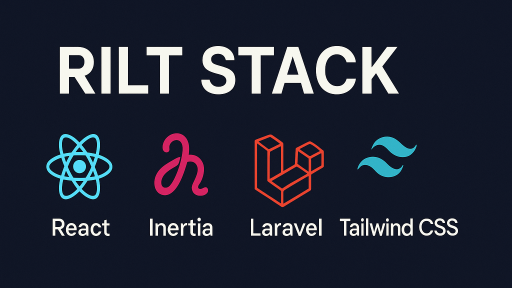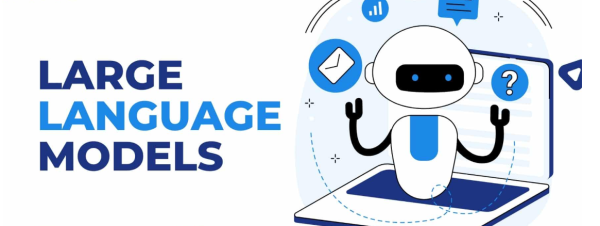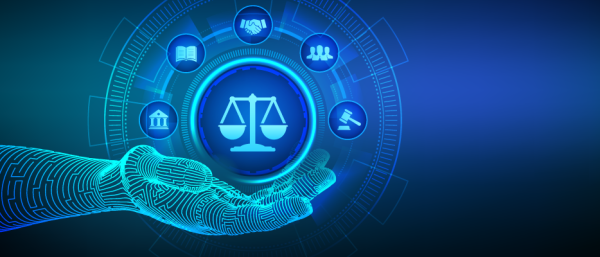AI Developments in Q2 2025
Transforming Technology and Industries
The second quarter of 2025 (April–June) has been a pivotal period for Artificial Intelligence (AI), marked by the release of advanced models, innovative applications, and platforms that are redefining technological boundaries. These developments are not only enhancing AI’s capabilities but also transforming industries such as healthcare, finance, and manufacturing, while raising important ethical and policy considerations. This article provides a comprehensive overview of the latest AI advancements in Q2 2025, focusing on new models, applications, and their broader implications.
Major AI Models Released in Q2 2025
Q2 2025 saw the introduction of several cutting-edge AI models, each contributing to the competitive and diverse AI landscape. These models reflect a trend toward enhanced reasoning, multimodality, and accessibility.
Gemini 2.5 Pro and Flash (Google DeepMind)
Google DeepMind unveiled Gemini 2.5 Pro and Gemini 2.5 Flash at Google I/O 2025, held in May 2025. Gemini 2.5 Pro leads in performance across benchmarks like WebDev Arena and LMArena, integrating LearnLM to enhance learning of scientific principles. It supports advanced reasoning for complex math and coding tasks, with an experimental “Deep Think” mode for highly specialized applications. Gemini 2.5 Flash, a preview version, is optimized for speed and efficiency, excelling in coding and real-time reasoning. Both models are available in the Gemini app, Google AI Studio, and Vertex AI, with rollout starting in early June 2025. Additionally, Gemini Diffusion, a new research model, was introduced for generating coherent text and code, with a faster 2.5 Flash Lite version planned for release soon.
Grok 3 (xAI)
xAI’s Grok 3 is a standout model in Q2 2025, featuring superior reasoning capabilities and a context window of 1 million tokens, enabling it to handle extensive and complex tasks. It includes innovative features like DeepSearch, which enhances information retrieval, and Big Brain Mode, which boosts computational power for intensive applications. The introduction of “Super Grok Agents” allows for autonomous task execution, making Grok 3 a versatile tool for developers and businesses. Its focus on reasoning and scalability positions it as a strong competitor to other leading models.
DeepSeek R1 (DeepSeek AI)
DeepSeek R1, launched in January 2025 but gaining significant traction in Q2, is an open-source model known for its reasoning-first approach and cost-efficiency. It is up to 30 times cheaper than OpenAI’s o1, making it accessible for developers and organizations with limited budgets. DeepSeek R1 excels in coding and mathematics, with robust performance in handling long-form content. Its open-source nature has fostered a growing community of developers, contributing to its rapid adoption in software development and research applications.
Claude 3.7 (Anthropic)
Anthropic’s Claude 3.7 emphasizes ethical AI and safety, with advanced reasoning capabilities and a potential “Thinking Model” architecture designed to align with human values. While specific release details for Q2 2025 are limited, Claude 3.7 builds on Anthropic’s reputation for responsible AI development, catering to users who prioritize transparency and ethical considerations. Its focus on safety makes it a preferred choice for applications requiring high trust, such as healthcare and legal sectors.
GPT-4.5 (OpenAI)
While not explicitly confirmed for a Q2 2025 release, industry speculation suggests OpenAI is developing GPT-4.5, which could feature a unified AI system with enhanced multimodality, powerful reasoning, and an expanded context window. If released, it would likely build on the success of OpenAI’s o1 model, which scored 96% on MedQA and 8.8% on Humanity’s Last Exam, indicating significant advancements in reasoning and domain-specific knowledge. The lack of a confirmed release date introduces some uncertainty, but GPT-4.5’s potential impact is widely anticipated.
Table 1: Major AI Models in Q2 2025
| Model | Developer | Key Features | Availability |
|---|---|---|---|
| Gemini 2.5 Pro | Google DeepMind | World-leading performance, LearnLM integration, Deep Think mode | Gemini app, Google AI Studio, Vertex AI |
| Gemini 2.5 Flash | Google DeepMind | Speed-optimized, strong coding/reasoning, Gemini Diffusion | Preview in June 2025 |
| Grok 3 | xAI | 1M token context, DeepSearch, Big Brain Mode, Super Grok Agents | Available now |
| DeepSeek R1 | DeepSeek AI | Open-source, cost-efficient, excels in coding/math, long-form content | Free on DeepSeek site, paid API |
| Claude 3.7 | Anthropic | Ethical AI, advanced reasoning, potential Thinking Model architecture | Available now |
| GPT-4.5 (Speculated) | OpenAI | Unified system, enhanced multimodality, powerful reasoning (unconfirmed release) | Not confirmed |
New AI Features and Applications
Q2 2025 introduced a range of innovative AI features and applications that are transforming how technology is used in daily life and industry. These advancements highlight AI’s growing integration into practical solutions.
Google’s AI Mode in Search
Google’s AI Mode in Search, announced at Google I/O 2025, enhances the search experience with Deep Search for thorough responses and agentic capabilities for interactive, personalized results. Features like Search Live, set to roll out in summer 2025, and AI Overviews, now serving 1.5 billion monthly users across 200 countries, demonstrate AI’s ability to deliver comprehensive and context-aware information. Additional features include AI Mode Shopping, which leverages the Shopping Graph for product browsing, and Virtual Try-On, allowing users to try on billions of apparel listings. These advancements are particularly relevant for SEM companies, as they require new optimization strategies for AI-driven search results.
FDA’s INTACT AI Tool
The U.S. Food and Drug Administration (FDA) launched INTACT on June 20, 2025, its first agency-wide AI tool. INTACT analyzes data trends, streamlines regulatory processes, and improves risk assessment, modernizing decision-making across FDA departments. This tool marks a significant step in AI-driven government transformation, demonstrating how AI can enhance operational efficiency and public service delivery in highly regulated sectors like healthcare.
AI in Robotics
AI advancements in robotics, as noted in the AI Atlas Report, are enabling robots to handle greater complexity and learn new skills autonomously. Google DeepMind’s RT-2 and Toyota Research Institute’s Diffusion Policy allow robots to perform over 60 new skills, such as complex manipulation tasks in manufacturing and logistics. These developments are supported by vision-language-action models and large behavior models, with applications in factories, warehouses, and hospitals. For example, Tesla aims to build 5,000 Optimus robots in 2025, highlighting the scale of AI-driven robotics growth.
AI Sound Sensors
AI-powered audio detection technologies are gaining traction, with applications in safety and infrastructure. A new AI sound sensor, developed for power grid monitoring, uses AI to “hear” sounds that identify disturbances, improving reliability and maintenance. Similarly, Resemble AI’s audio detection enhances public safety by detecting gunshots and explosions, showcasing AI’s role in sensory applications. These technologies are part of a broader trend toward AI-driven smart audio systems, with the smart sound market projected to grow from $51.6 billion in 2024 to $251.1 billion by 2033.
Table 2: Key AI Applications in Q2 2025
| Application | Description | Impact | Example |
|---|---|---|---|
| AI Mode in Search | Deep Search, agentic capabilities, AI Overviews for 1.5B users | Enhances search personalization | Google Search |
| FDA’s INTACT | Analyzes data, streamlines regulations, improves risk assessment | Modernizes government operations | FDA regulatory processes |
| AI in Robotics | Robots learn >60 skills via generative AI and ML | Boosts automation in industry | Google DeepMind RT-2, Tesla Optimus |
| AI Sound Sensors | Detects disturbances in power grids, enhances safety with audio analysis | Improves infrastructure and security | Power grid monitoring, Resemble AI |
Industry-Specific Advancements
AI’s impact in Q2 2025 extends across multiple industries, with significant advancements in healthcare, finance, and manufacturing, each leveraging AI to address specific challenges.
Healthcare
AI is revolutionizing healthcare, particularly in clinical diagnosis and regulatory efficiency. OpenAI’s o1 model scored 96% on MedQA, outperforming or matching physicians in diagnostic accuracy, as noted in the AI Index 2025. The FDA’s INTACT tool further supports healthcare by streamlining regulatory processes, ensuring faster and safer approval of medical products. These advancements suggest AI’s potential to enhance patient outcomes and operational efficiency, though ethical concerns about data privacy and bias remain.
Finance
AI is driving predictive analytics and personalized financial services in the finance sector, as highlighted in AI investment trends. AI-powered tools help institutions analyze market trends and customer behavior, improving decision-making and customer experience. The rise of AI in software stocks, amid policy uncertainty, underscores its role in shaping investment strategies. However, challenges like ROI measurement and regulatory compliance are critical considerations for financial institutions adopting AI.
Manufacturing and Logistics
AI-driven autonomous robots are transforming manufacturing and logistics, reducing changeover times and enhancing efficiency. The AI Atlas Report notes that robots powered by generative AI and ML, such as those from Google DeepMind and Toyota, are streamlining operations in factories and warehouses. Software robots, or intelligent agents, are also automating back-office tasks, with examples like UiPath’s Agent tool and Microsoft Power Automate handling complex workflows. These advancements promise significant productivity gains, though they raise concerns about job displacement.
Software Development
The new AI models and tools introduced in Q2 2025 are significantly impacting software development. Gemini 2.5 Flash and DeepSeek R1, with their strong coding capabilities, are streamlining development processes, enabling developers to generate code faster and with fewer errors. Progress Software’s Q2 2025 release of Telerik and Kendo UI includes AI Coding Assistants for Blazor and React, as well as AI-driven theme generation, demonstrating how AI is enhancing development environments. These tools allow developers to focus on higher-level tasks, though concerns about over-reliance on AI and the need for upskilling persist.
Table 3: Industry-Specific AI Advancements
| Industry | Advancement | Impact | Example |
|---|---|---|---|
| Healthcare | AI outperforms physicians in diagnosis, streamlines regulations | Improves patient outcomes, efficiency | OpenAI o1, FDA INTACT |
| Finance | Predictive analytics, personalized services | Enhances decision-making, customer experience | AI-driven market analysis |
| Manufacturing | Autonomous robots, software agents automate tasks | Boosts productivity, reduces costs | Google DeepMind RT-2, UiPath Agent |
| Software Development | AI-powered code generation, debugging, and CI/CD optimization | Enhances coding efficiency, reduces bugs, accelerates deployment | GitHub Copilot, OpenAI Codex, AWS CodeWhisperer |
Ethical and Policy Developments
As AI becomes more pervasive, ethical considerations and policy frameworks are evolving to address its societal implications. Q2 2025 has seen significant developments in this area.
Legislation and Policy
The AI Index 2025 reports a surge in AI-related legislation, with 131 AI bills passed in U.S. states in 2024, 56 focusing on deepfakes, and Europe enacting the AI Act. These policies aim to regulate AI use, ensure safety, and protect user rights, reflecting a global trend toward increased oversight. In Q2 2025, cybersecurity concerns also emerged, with new malicious AI variants based on models like Grok and Mixtral being used for phishing and malware creation, prompting calls for stronger AI safety protocols.
Public Opinion
A global survey across 32 countries, cited in the AI Index 2025, found that 60% of people believe AI will change work habits, while 36% expect it to replace their jobs. This reflects a mix of excitement and concern about AI’s transformative potential. Public concerns about misinformation, job displacement, and ethical AI use are driving demand for transparency and accountability in AI development, particularly in applications like search and healthcare.
Table 4: Ethical and Policy Developments
| Development | Description | Impact | Example |
|---|---|---|---|
| Legislation | 131 U.S. AI bills in 2024, Europe’s AI Act, focus on deepfakes and safety | Regulates AI use, enhances safety | U.S. state laws, EU AI Act |
| Public Opinion | 60% expect work habit changes, 36% fear job loss | Drives demand for ethical AI | Global survey across 32 countries |
| Cybersecurity | Malicious AI variants based on Grok, Mixtral used for cyberattacks | Urges stronger AI safety protocols | Phishing, malware automation |
Future Outlook
The developments in Q2 2025 suggest a future where AI is deeply integrated into daily life and industry. The trend toward more efficient, reasoning-focused models like DeepSeek R1 and Gemini 2.5 Flash indicates a shift toward accessible and specialized AI solutions. Applications like AI Mode in Search and INTACT point to AI’s growing role in enhancing user experiences and operational efficiency.
However, challenges remain. The narrowing performance gap between U.S. and Chinese AI models, as reported in the AI Index 2025, suggests increasing global competition. Rising training costs, with models like Gemini 1.0 Ultra costing $191.9 million, and environmental concerns, such as Llama 3.1’s 8,930 tonnes of CO2 emissions, highlight the need for sustainable AI development. Public concerns about job displacement and ethical AI use, coupled with increasing legislation, will shape how these technologies are adopted.
Conclusion
Q2 2025 has been a transformative period for AI, with the release of advanced models like Gemini 2.5 Pro and Flash, Grok 3, DeepSeek R1, and Claude 3.7, alongside innovative applications such as Google’s AI Mode in Search, the FDA’s INTACT tool, AI-driven robotics, and sound sensors. These developments are reshaping software development and industries like healthcare, finance, and manufacturing. While offering significant opportunities for efficiency and innovation, they also raise ethical, policy, and societal challenges that require careful consideration. As AI continues to evolve, its impact on technology and society will only deepen, making it essential for businesses and individuals to stay informed and engaged with these advancements.





